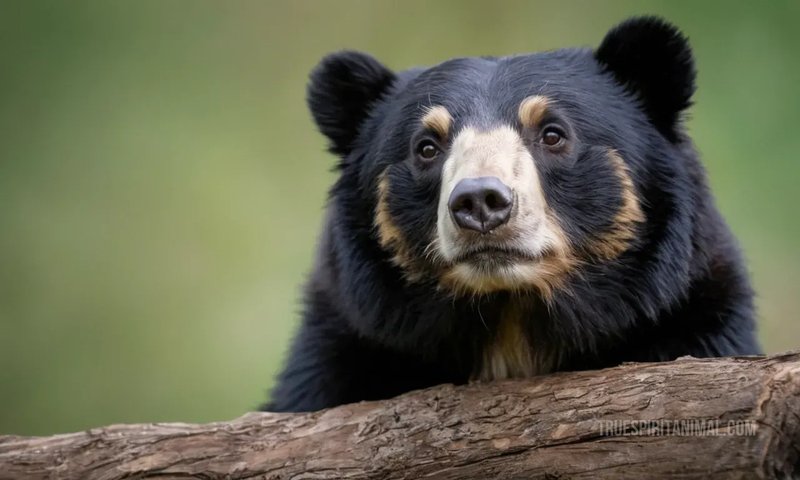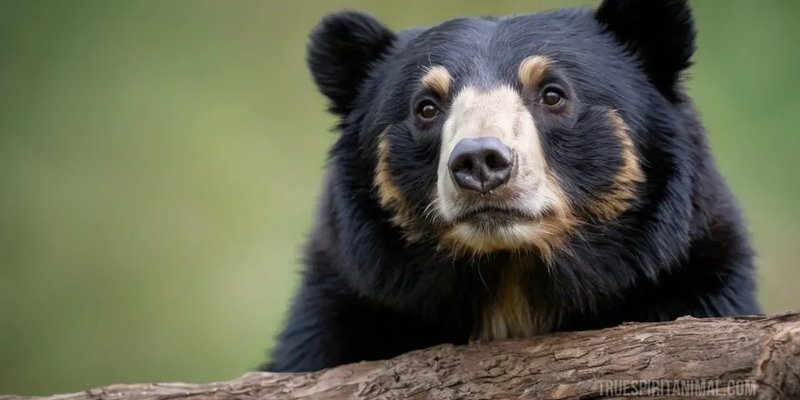
Just like how not every remote control works with every television, not every bear lives up to the stereotypes we often hear. The spectacled bear, named for the unique markings around its eyes that resemble glasses, is more than just its looks. Often, its diet, behavior, and habitat lead to misconceptions that could fill a bear-sized book. I’m here to help clarify those myths so we can appreciate this incredible animal a bit more.
Myth 1: Spectacled Bears Are Aggressive
One of the biggest myths about the spectacled bear is that they are aggressive creatures. Honestly, this couldn’t be further from the truth. Spectacled bears are actually quite shy and prefer to avoid confrontation. They’d much rather munch on fruits and leaves than engage with humans or other animals.
Most interactions between humans and spectacled bears come from habitat overlap rather than outright aggression. In fact, if you see one, your best bet is to back away slowly. They might huff or puff, but that’s just their way of expressing discomfort—not a sign they’re about to charge.
It’s important to remember that every animal acts out of instinct. Like many wild animals, they will defend themselves if they feel threatened, but they generally keep to themselves.
Myth 2: They Are Related to Panda Bears
You might be wondering if the spectacled bear is just a distant cousin of the panda bear. While both bears have their own unique charm, they belong to different genera. The spectacled bear is part of the Tremarctos genus, while the well-known giant panda falls under the Ailuropoda genus.
What’s interesting is that both bears share a love for bamboo and a somewhat herbivorous diet, which fuels this misconception. However, unlike the panda who relies heavily on bamboo, the spectacled bear enjoys a more varied diet. It includes fruits, nuts, and even small animals on occasion. So while they may share some traits, they are definitely not related.
Myth 3: Spectacled Bears Are Endangered Because of Hunting
Another common misconception is that spectacled bears are primarily threatened by hunting. While hunting has played a role in their decline, the main danger they face comes from habitat loss. Expanding agriculture, deforestation, and human encroachment into their natural habitats have severely impacted their populations.
In many regions, these bears are still hunted, but it’s the loss of their home that poses the greatest risk to their survival. Conservation efforts are focusing on protecting these habitats, which gives the spectacled bear a fighting chance. Protecting their forests is just as crucial as addressing hunting.
Myth 4: Spectacled Bears Are Solitary Creatures
You might think that, like many bears, the spectacled bear is a solitary animal. While it’s true they often enjoy their own company, they can also be quite social. During certain times of the year, you might find them sharing food sources or even playing together—especially mothers with their cubs.
These bears have a variety of social interactions, from vocalizations to physical gestures. They communicate with each other much more than many people realize. This gives us a glimpse into their social structures and how they bond within their species.
Myth 5: They Don’t Have Any Natural Predators
Here’s the thing: while adult spectacled bears have few natural predators due to their size, they’re not entirely invulnerable. Young cubs are at risk from larger carnivores, including mountain lions and even other bears. Nature can be tough, and newborns need their moms to keep them safe.
In the wild, a mother bear is fiercely protective of her cubs, teaching them everything they need to know to stay safe and healthy. But without their mother, cubs can find themselves in a precarious position. So, while adult spectacled bears may be at the top of their food chain, their young ones aren’t as safe.
Myth 6: Spectacled Bears Are All Black
It’s easy to think that all spectacled bears are just black with those signature markings, but there’s a lot more variety in their coats. You might come across individuals with a rich golden-brown or even cream-colored fur. The patterns can also vary widely, and some bears have more defined “glasses” than others.
This color variation helps them blend into their environment—a clever survival tactic. In the dappled light of the Andean forests, a more colorful coat can provide camouflage from potential threats. So, if you ever see one, take a moment to appreciate the individual beauty of each bear.
Myth 7: Spectacled Bears Are Only Found in the Andes
You might think that the spectacular bear is only a mountain dweller, but they’ve actually been spotted in a variety of habitats across South America. From the cloud forests to lowland jungles, these bears can adapt to diverse environments.
While they are most commonly associated with the Andes, their range also includes parts of Colombia, Ecuador, Peru, and Bolivia. Understanding their adaptability can help us appreciate their role in the ecosystems they inhabit and why it’s critical to protect these areas.
So, there you have it! The spectacled bear is a complex creature, rich with habits and personalities that deserve our understanding and respect. They aren’t just shy and misunderstood; they are adaptable survivors that play an essential role in their ecosystems.
By clearing up these myths, we can foster a greater appreciation for these incredible animals. Next time you hear someone mention the spectacled bear, you can share these insights. The more we know, the more we can help protect and conserve the habitats they rely on. Let’s work together to support this remarkable bear and ensure it thrives for generations to come.

